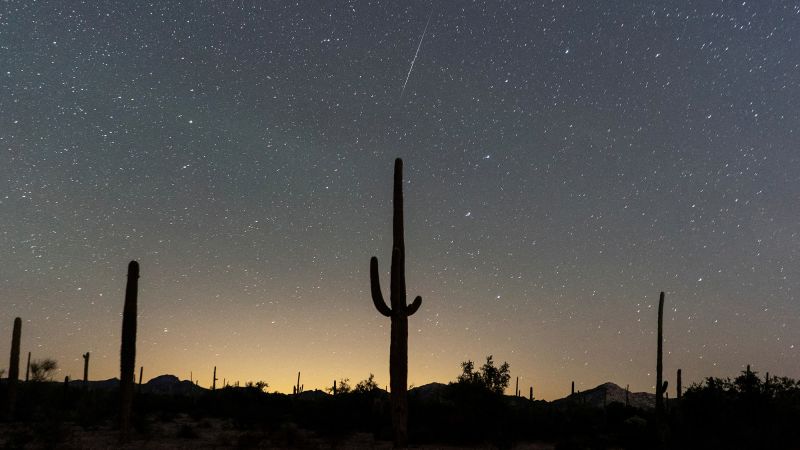The annual Geminid meteor shower is upon us again, providing a splendid opportunity for sky-gazers to marvel at nature’s fireworks. As one of the most anticipated celestial events, it is expected to reach its peak, offering viewers a chance to witness numerous meteors streaking across the night sky. Observers are advised to prepare themselves to catch a glimpse of this spectacular display.
The peak activity of the Geminids is projected between noon and 8 p.m. ET on the upcoming Friday. This information comes from Robert Lunsford, the fireball report coordinator for the American Meteor Society. The excitement surrounding the meteor shower this year comes with a twist: the moon will be 95% full on Thursday night, which is poised to obscure a significant portion of the meteoric activity. According to the American Meteor Society, this brightness will likely hinder about 75% of visibility compared to years that had little to no moonlight. The moon will reach its fullest brightness on Sunday.
For the best viewing experience, experts recommend finding a location far removed from city lights and ensuring the skies are clear. Bill Cooke, who leads NASA’s Meteoroid Environments Office, suggests that viewers look upwards between 9 to 10 p.m. on Friday night, regardless of the time zone they inhabit. However, to dodge the full moon’s intensity, Lunsford recommends that eager viewers should also consider the early morning hours of Friday and Saturday, finding opportunities when the moon has set low in the west.
Lunsford expresses hope for potential viewers: “I would suggest looking during the last few hours before dawn on the 13th and 14th.” At that time, the moon will present less of a hindrance, permitting clearer views of the meteors. The American Meteor Society estimates that the Geminids can yield as many as 15 visible meteors per hour this year under these conditions.
Cooke provided additional insights into the challenges posed by the bright moonlight. “The moon will be full on the 15th, about a day after the peak,” he notes, adding that this will significantly reduce the observable meteors. Instead of the potential 40 to 60 meteors per hour, viewers may only see about 10 to 15 due to the overwhelming brightness of the moon.
Despite the challenges, Lunsford emphasizes that even with the moon’s interference, observers will still witness more meteors during the Geminids’ peak than on most other nights throughout the year. He encourages enthusiasts to seek transparent skies, especially considering the impending full moon. Areas like beaches, which are often hazy, may not provide the best views; instead, seeking higher ground, such as mountaintops, could enhance visibility.
The Geminids are unique, originating from debris shed by the asteroid 3200 Phaethon. This celestial body, with its close orbit around the sun, releases particles due to extreme heat, forming a stream of meteors along its path. As Earth orbits and crosses near this stream during early December, observers can enjoy the display.
The meteors emanate their brilliance from the direction of the constellation Gemini. “At this time of year, Gemini rises in the east, is overhead at about 2 a.m., and sets in the western sky around sunrise,” explains Lunsford, underscoring why the Geminid meteors can be seen throughout the night.
For those looking to pinpoint the source of the meteors, navigating back to the two brightest stars in Gemini can be helpful. Lunsford reassures viewers that there is a high probability (about 90%) that any meteor sighted during this time belongs to the Geminid shower.
In 2024, the next significant meteor shower will be the Ursids, set to peak in the early hours of December 22. As celestial phenomena capture our imaginations and offer moments of wonder, the Geminid meteor shower remains a highlight of the annual astronomical calendar, inviting everyone to step outside and gaze into the universe.



